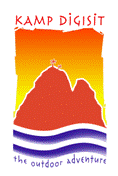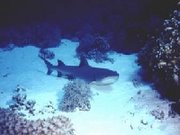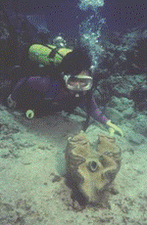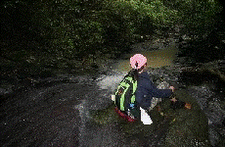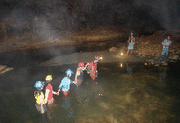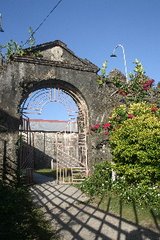
Forty college students of the University of the Philippines Diliman enrolled in the Skin Diving class of Louie Mencias stayed at Diver’s Sanctuary in Ligpo, Lemery to explore reef areas and apply their skills in the real marine environment. Aside from a few, most of them have snorkeled in the sea for the first time. With mask, snorkel and fins they swam over the shallow reef areas between the resort and Ligpo Island.

They saw several Pacific blue starfish, brittle stars, clownfishes in their anemones, butterfly fishes, several species of hard corals, basket sponges and other reef fishes and marine life forms. On the second day, they were taken by boat to the reef in San Pablo,fronting Dive and Trek Resort.

While most of them thought that their experience in Ligpo was awesome, the one over in San Pablo was even more incredible. They were able to feed the fishes by hand and had close encounters with various species of reef fish including the sergeant major or abudefduf which is abundant in the area. There were also several species of parrot fish that are used to seeing divers, hence are not afraid of people. The reef is a best practice site for reef rehabilitation and enhancement. It's case study was featured in the book "Sustainable Solutions" compiled by Ford Foundation and launched during the World Summit on Sustainable Development (WSSD) in South Africa in 2002.

Through clam restocking conducted by the Marine Ecosystem Council, Inc. (MEC) the reef sprang back to life and became valuable both to fishery and tourism. MEC was co-founded by Mr. Mencias in the mid 90's and he headed this volunteer organization for eight years. The students were likewise amazed at the giant clams (Tridacna gigas) that were on the reef. They were seeded eight years ago and grew in size. Most of them are now spawners, contributing millions of eggs and sperm in the water column that serve as food for fishes. They are also dispersed by currents and waves to nearby reef areas. Clam restocking in marine protected areas (MPA) has been proven to restore damaged and over-fished reef areas. As long as the seeded clams are protected and left on the reef, they become source of nutrient and food and provide a good substrate for corals.
Much gratitude goes to Mr. Allan Lao, manager of Diver's Sanctuary Resort for being such a gracious host. Many thanks to Karlo Yap, former President of U.P Marine Ecosystem Council (UP-MEC) the student organization of MEC for taking all the wonderful photos in this article. Thanks also to Roxy Bugayong, another ex-President of UP-MEC and member Apple Adan for joining the group and providing support. To the students who joined the activity, may you explore the marine environment more and in your own ways become stewards of this valuable resouce.

Wildlife in the Classroom program promotes the deepening of the learning process through purposeful outdoor activities. Authentic learning promotes the assimilation of "life effectiveness skills" that capacitate humans to be responsible global citizens. As one student pointed out after the field trip,"Thank you for the wonderful experience... It was my very first time to go out of the city and it would be my most unforgettable experience. Everything I saw on television, in the newspapers and in magazines, I saw in real life....The experience helped me build my self-esteem and trust on myself."
Let us know how outdoor education changes you. Leave your comments and suggestions.
For more information on clam restocking, visit www.ecorephil.blogpost.com. To learn about the link of environmental protection to tourism, visit http://www.tourismplan.blogspot.com.




